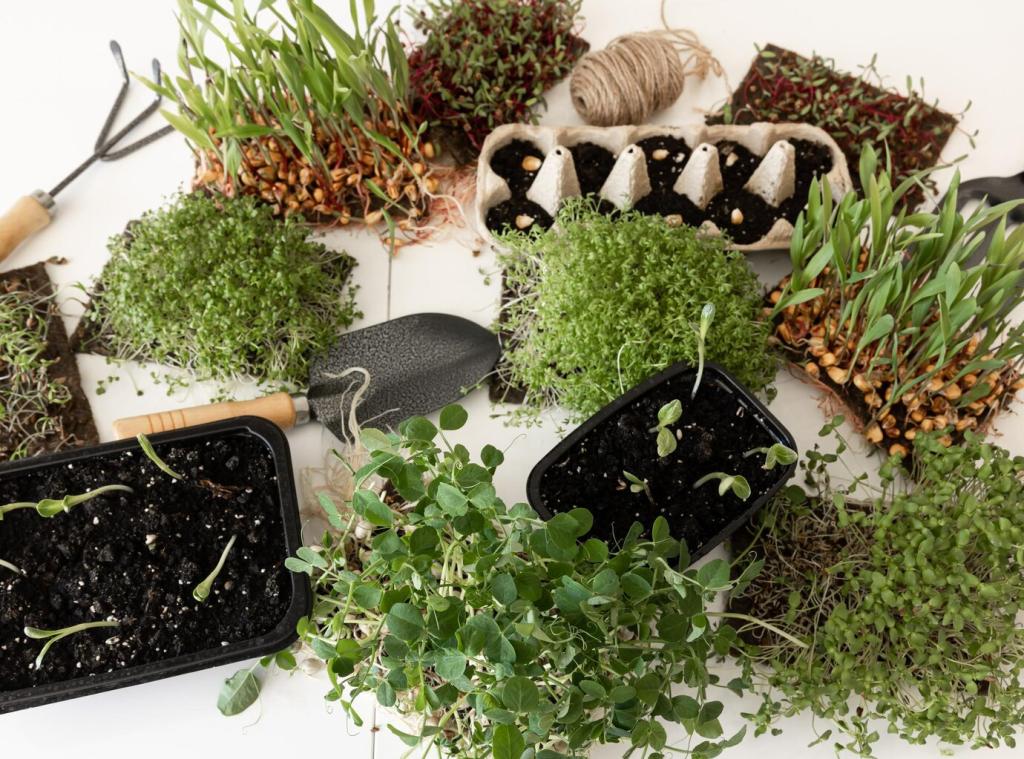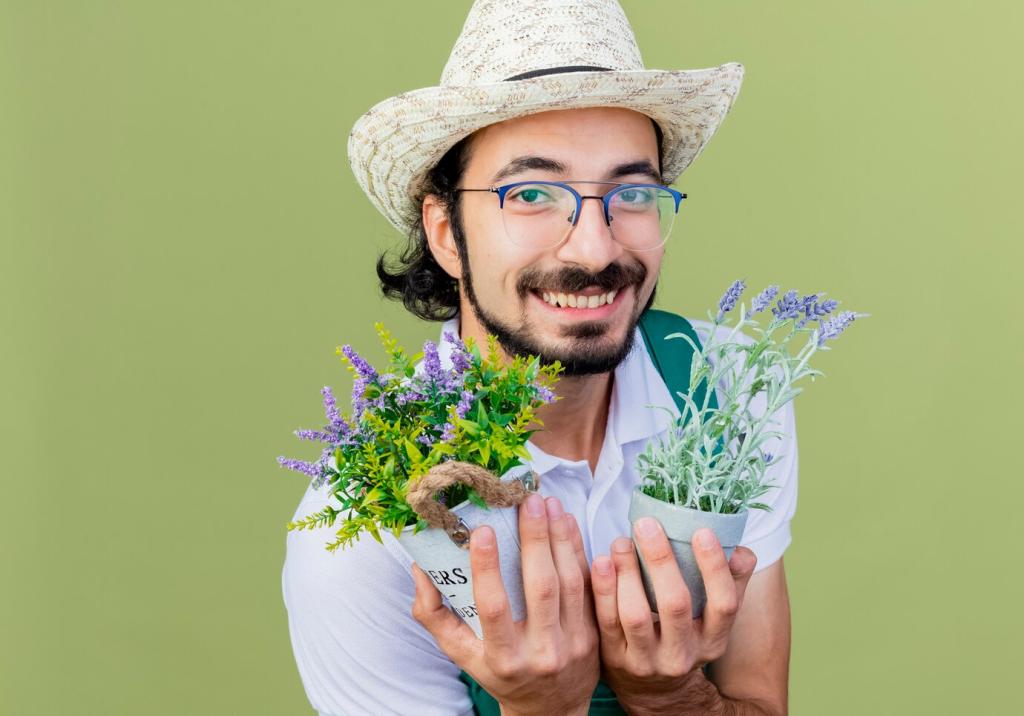Essential Tips for Creating a Home Herb Garden
Creating a home herb garden is a delightful and rewarding endeavor that brings flavor, fragrance, and beauty into your living space. Whether you are an experienced gardener or a beginner, cultivating your own herbs offers convenience and freshness that store-bought picks can’t match. This comprehensive guide will help you take your first steps toward a thriving herb garden by providing essential tips, advice, and insights. With thoughtful planning, the right plant selections, and proper care, you can create a lush, bountiful herb oasis in your home any time of year.
Picking the Perfect Location
Assessing Available Spaces
Before you plant anything, carefully observe the available spaces in and around your home. Consider windowsills, balconies, patios, and spots in your kitchen that receive abundant natural light. Spaces with adequate sunlight and good air circulation are especially important, as herbs love bright conditions. Think about how the space will fit your lifestyle too—easy access for watering, trimming, and harvesting makes gardening much more enjoyable and sustainable.
Understanding Sunlight Requirements
Herbs typically thrive with at least six hours of direct sunlight daily. This means that southern or western-facing windows are typically ideal for indoor gardens, as they provide maximum exposure throughout the day. If you lack natural sunlight indoors, consider augmenting with grow lights to ensure your herbs receive the light they need. Observing patterns of light throughout the day helps prevent leggy, weak plants and promotes robust, flavorful growth.
Prioritizing Convenience and Accessibility
Accessibility is often overlooked but vital for a successful home herb garden. Positioning your herbs where you see and pass by them daily encourages regular care and harvesting. Herbs placed close to your kitchen make it easy to snip what you need while cooking, reducing the barrier between plant and plate. Convenience leads to better maintenance, consistent watering, and more frequent harvesting, which in turn keeps your plants healthy and productive.
Previous
Next
Selecting the Best Herbs for Home Gardening
Take your local climate into account when selecting herbs, especially if planning to grow them outdoors. Some herbs like basil and cilantro are sensitive to temperature changes and need warmer conditions, while others like rosemary and thyme are hardier. Even for indoor gardens, temperature fluctuations and humidity can affect growth, so choose herbs that will thrive in your home’s environment.
Preparing Soil and Containers
Herbs thrive in well-draining, nutrient-rich soil. A good potting mix for herbs combines organic matter, perlite or sand, and sometimes a bit of compost. Avoid heavy garden soil, as it can retain too much moisture and lead to root rot when grown in containers. Pre-mixed potting soil for herbs or vegetables is widely available and often specifically formulated to promote healthy root systems, strong growth, and resistance to disease.

Overwatering is one of the most common problems for novice herb gardeners. Most herbs prefer soil that is moist, not soggy. Letting the top inch of soil dry out between waterings usually works for most varieties. Instead of sticking to a rigid schedule, assess soil moisture regularly using your finger to gauge when your plants actually need water. Inconsistent watering can stress plants and impact flavor.
Watering and Feeding Your Herbs
Pruning and Harvesting Techniques
Timing for Maximum Flavor
Herbs typically boast their most intense flavor right before they flower. Harvesting in the morning, after the dew dries but before the day heats up, helps preserve essential oils. Regular, timely harvesting promotes new growth and delays flowering, ensuring a continual supply of fresh, aromatic leaves to enjoy in your cooking.
Techniques for Promoting Growth
Pinching or cutting stems just above a leaf node encourages branching and prevents legginess. For leafy herbs like basil or mint, remove the top set of leaves regularly to keep the plant compact and bushy. Woody herbs like rosemary or thyme benefit from occasional trimming to remove older, woody stems and stimulate new, tender shoots. Consistent pruning prevents plants from becoming unruly and enhances both appearance and output.
Storage Methods for Extra Harvest
If your herb garden produces more than you can use fresh, proper storage methods are essential to make the most of your bounty. Herbs can be air-dried, frozen, or preserved in oil or vinegar. Each method helps retain the herb’s distinctive flavor and fragrance, allowing you to savor your homegrown goodness even during off-seasons. Label and store properly to keep herbs potent and ready to use.
Recognizing Common Pests
Aphids, spider mites, and whiteflies are frequent troublemakers in home gardens. Check your plants often for signs of infestation, such as sticky residue, discolored leaves, or fine webbing. Even indoor gardens can attract pests through open windows or newly acquired plants. Prompt action when you spot the first signs helps prevent minor problems from becoming major headaches.
Natural and Safe Solutions
Resist the urge to use harsh chemical pesticides, especially on edible plants. Insecticidal soap, neem oil, or a simple spray of water can control many pests effectively without leaving harmful residues. Encourage beneficial insects like ladybugs if growing outdoors, and always wash your herbs before using them in the kitchen. Keeping your plants healthy with good airflow and proper care is the best long-term defense.
Preventative Care and Monitoring
Routine inspection is essential for healthy herbs. Remove dead or yellowing leaves and keep the area clean to deter pests and disease. Quarantine new plants before introducing them to your garden to reduce the risk of spreading issues. Maintaining a consistent care routine, avoiding overcrowding, and providing adequate ventilation all contribute to robust, pest-resistant herbs.
Maximizing Growth Through Year-Round Care

Adjusting Care With the Seasons
Changing temperatures and light conditions require adjustments in watering, feeding, and positioning of your plants. During winter months with less natural light, supplement with grow lights and reduce watering to match slower growth. In the summer, your herbs might need more frequent watering and attention to prevent overheating or drying out, particularly near windows.

Overwintering and Indoor Transitions
Some herbs are perennial and can continue to grow year after year with proper care. If you grow herbs outdoors during the warm months, consider bringing them inside as the weather cools. Transition gradually by moving pots to shadier areas before bringing them indoors to minimize shock. Prune back overgrown plants and check carefully for pests before moving them to avoid introducing issues indoors.

Planning for Continuous Harvest
Planting in cycles or staggering herb starts ensures you always have fresh growth coming up as older plants get woody or spent. Succession planting, or starting new seeds every few weeks, helps guarantee a steady supply of tender, flavorful leaves for your kitchen. Take notes of what works best each season to refine your approach year after year, building a self-sustaining, ever-improving garden.
